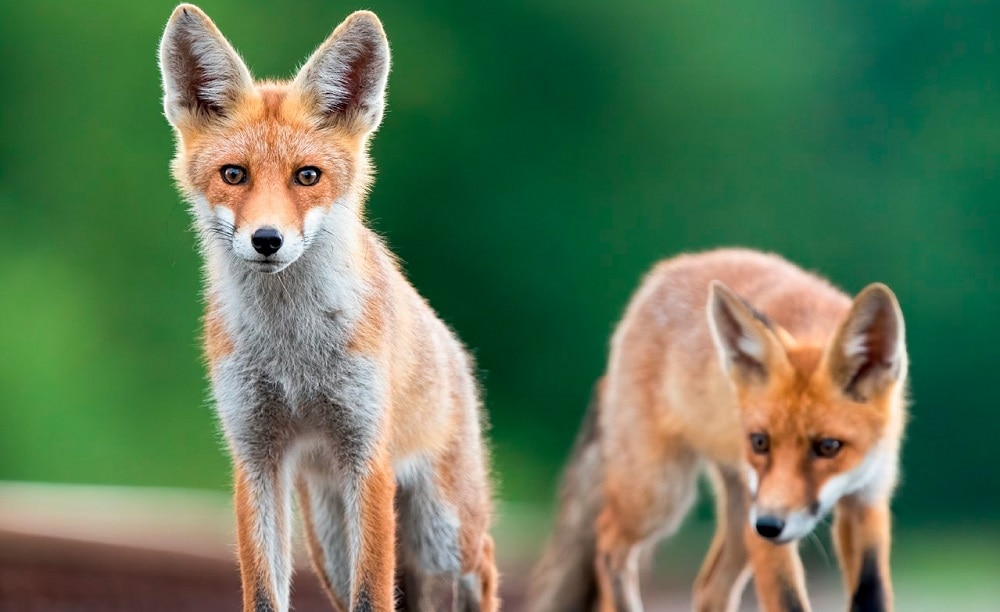Environmental protection

Russian Railways is a major natural resource user operating in 77 regions of Russia. Russian Railways has set its priorities in the rational use of natural resources and improving environmental safety until 2025 in line with the basic principles of state environmental development policy for the period through to 2030Approved by the Russian President on 30 April 2012 and by the Russian President’s Decree No. 204 On National Goals and Strategic Objectives of the Russian Federation through to 2024 dated 7 May 2018.. In line with the government’s environmental priorities, Russian Railways’ efforts are focused on improving environmental safety, ensuring rational use of resources and preserving natural systems.
- use green technologies at 127 facilities in the republics of Buryatia and Karelia, Krasnodar, Perm, Primorye, and Khabarovsk territories, Kaluga, Kirov, Samara, Amur, and Nizhny Novgorod regions;
- construct or upgrade eight treatment facilities for industrial, utility and sanitary effluents in the republics of Buryatia and Yakutia, Krasnodar and Altai Territories, Irkutsk, Saratov, and Orenburg regions, using the best available technologies;
- liquidate seven sites of accumulated environmental damage in the Krasnoyarsk and Khabarovsk territories, Irkutsk, Chelyabinsk, Kursk, and Kemerovo regions;
- renovate an industrial landfill in the Orenburg Region.
Reducing environmental impact
In reducing its environmental impact, the Company follows the Environmental Strategy through 2020 and potentially through 2030 and the Energy Strategy through 2020 and potentially through 2030, as well as the Climate Doctrine of the Russian Federation.
GHG emissions management is an element of Russian Railways’ corporate strategy, allowing the Company to contribute to achieving the national
Russian Railways submits annual data for GHG emission assessment for the purpose of CDP reporting and attends working group meetings of the Russian Union of Industrialists and Entrepreneurs (RSPP) and the Ministry of Economic Development. The Company takes part in discussions on federal regulations, submitting proposals and comments based on specifics of the railway transport.
In 2015, the Company made a commitment to address climate change issues.
Russian Railways responsibly and consistently implements a programme for reducing GHG emissions in its operations. 2019 saw a reduction in CO2 emissions (including indirect emissions from the use of heat and electricity) to 38.5 mt, 43.9% below the level of 1990, at similar transportation volumes.
In late 2019, to develop the GHG emissions accounting and management system, Russian Railways adopted a programme of organisational and technical initiatives for 2020–2025. According to the Long-Term Development Programme, specific GHG emissions will be 4.5% down vs 2018.
The decline will be attributable to new solutions which reduce fuel consumption in traction and stationary power generation. In particular, locomotives using an autonomous diesel heating system have a 10–16% lower fuel consumption when hot idle. The deployment of modular gas-fired boilers instead of those fuelled by coal and fuel oil significantly reduces pollutant emissions. The introduction of resource-saving technologies involves resource-saving solutions for railway stations as part of the Smart Railway Station concept, transition to LED lighting, automated central heat stations, energy-efficient passenger and freight train schedules, and automatic train operation systems.
Shifting to new types of rolling stock is essential for reducing GHG emissions. In particular, the indicative environmental impact of Lastochka electric trains calculated by the Company showed a significant advantage of rail passenger transport as compared to motor vehicles. In 2019, Lastochkas emitted 190.7 kt of CO2 vs 1,110 kt of CO2 which motor vehicles would emit for transporting the same number of passengers over the same route (5.8 times higher).
Atmospheric air protection and noise exposure reduction
As part of the corporate Environmental Strategy, the Company cut its emissions from stationary sources in 2019 by 8.8% y-o-y. Emissions from stationary sources were reduced due to the construction of new and renovation of existing boilers, transition of boilers to greener fuel, improved efficiency of fuel combustion, introduction of electric heating, disposal of underutilised coal boilers, upgrade of existing and installation of new dust and gas collectors.
For the purpose of noise control and reducing emissions in residential areas, the Company draws noise maps for ranking risks and developing a priority action plan to mitigate them. Other factors contributing to noise reduction:
- resilient rail fastening and continuous welded rails;
- replacing cast iron brake shoes with compound ones;
- protective screens along tracks;
- afforestation;
- rolling stock upgrade.
Waste management
Up to 80% of waste generated by Russian Railways is reused or recycled. Most of it (ferrous and non-ferrous scrap metals and used petroleum products) is handled by waste processing professionals. Waste is also reused within the Company, including waste hazard classes 5 and 2–4 as per the waste management licence obtained by Russian Railways.
In 2019, Russian Railways generated 1.486 mt of production and consumption waste, of which 0.088 mt was disposed of or decontaminated by the Company’s units. 1.386 mt of waste was transferred to third parties, including:
- 0.876 mt for subsequent disposal;
- 0.218 mt for decontamination;
- 0.274 mt for dumping.
In 2019, 82.9% of waste was decontaminated or recycled by Russian Railways (up 1.2% y-o-y).
Biodiversity conservation

The Company pays great attention to the conservation of biodiversity in railway infrastructure areas and next to railway stations. Parts of tracks often crossed by animals are equipped with reflective tape, and are monitored together with forestry and hunting sector representatives.
In 2019, as part of its Environmental Strategy and for biodiversity conservation, Russian Railways:
- released over 2 t of fingerlings into rivers;
- planted over 560,000 trees and bushes;
- planted over 10,000 seeds in greenhouses as part of the Baikal Forest programme;
- participated in garbage cleaning as part of Green Spring, Green Friday, Victory Forest, and Green Russia Environmental Subbotnik.
- launched 51 eco-friendly suburban Green Trains;
- placed over 3,000 posters dedicated to specially protected natural areas at Russian Railways’ infrastructure facilities.